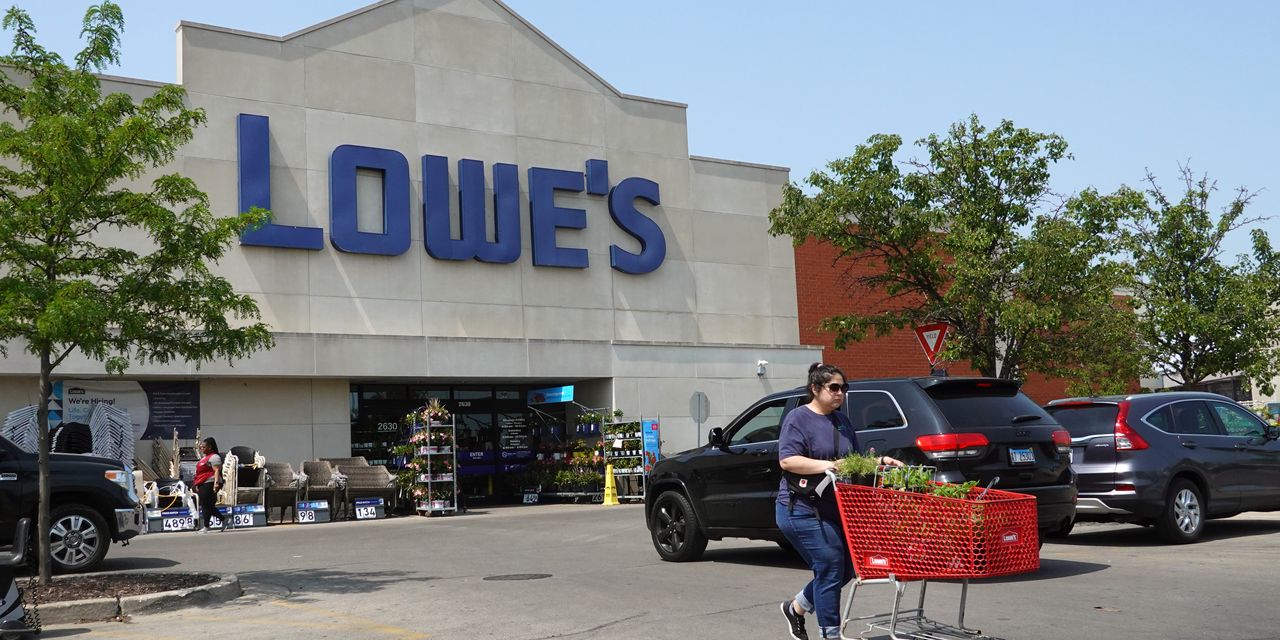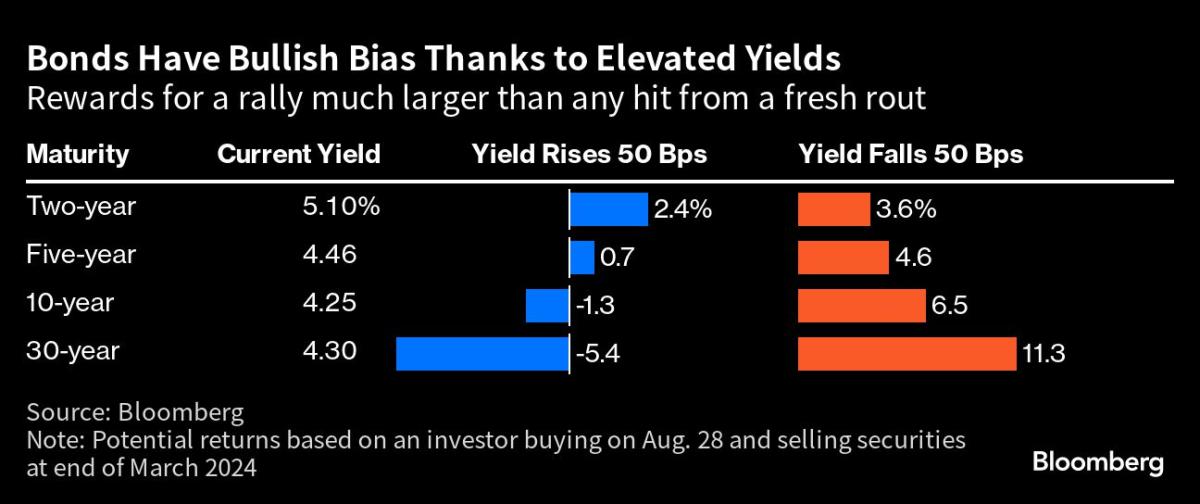font size

Lowe’s is expanding its contractor-serving business to compete with Home Depot.
Scott Olson/Getty Images
Home improvement retailer
Louie
It beat earnings forecasts in the second quarter, and stuck to its guidance for the full year despite waning demand for do-it-yourself projects.
Louie
The stock (Ticker: LOW) rose 2.6% in pre-market trading to $223.30 shortly after the earnings announcement. Shares are up 9.2 percent this year through Monday’s close.
The company reported earnings per share of $4.56 for the quarter, beating FactSet’s forecast of $4.47. Revenue of $25 billion was in line with analyst estimates.
Comparable store sales fell 1.6% for the period, less than the 2.6% decline expected by analysts polled by FactSet. The company said a “strong rebound in the spring” and growth in online sales offset the lumber contraction and lower discretionary demand in “handicrafts”.
“Lowe’s results were slightly better than published expectations, perhaps in line with how the market positioned,” DA Davidson analyst Michael Baker wrote in a note on Tuesday. Baker has a Buy rating on Lowe’s stock with a price target of $237.
Lowe’s sees comparable-store sales falling 2% to 4% for the full year, with earnings per share of $13.20 to $13.60, and revenue of $87 billion to $89 billion. That’s very much in line with Wall Street, which expects a profit of $13.33 a share on sales of $88 billion.
“Our ability to reduce expenses while improving customer service is the result of excellent execution by our team, and we remain confident in the mid- to long-term outlook for the home improvement industry,” CEO Marvin Ellison said in a company statement.
Lowe’s results suggest that the challenges facing the home improvement sector may abate in the second half of the year, wrote Max Rakhlenko, an analyst at TD Cowen, who has a Market Performance rating for the stock with a $225 price target.
Better weather and lower lumber prices should be favorable for the company, Rakhlenko writes, adding that he expects “strong demand” for smaller renovation projects. However, it’s still watching a steady slowdown in the discretionary big-ticket categories — which is competitive
Home Depot
(HD) I warned him as well.
“While there has been strength in categories associated with smaller projects, we have seen continued pressure in some of the big-ticket discretionary categories,” Home Depot CEO Ted Decker said in a company statement last week. Home Depot beat earnings expectations and reiterated its financial forecast for the fiscal year, resulting in a series of increases to targets for the share price.
The home improvement sector has been pressured by a lack of activity in the housing market. High mortgage rates alienate potential buyers, and they cut off from the renovation projects that often happen after buying a home. Dealing with inflation and an unseasonably cold spring, even interest in DIY projects has waned.
Among the largest home improvement retailers, Home Depot did a little better, thanks to its greater exposure to professional builders. But Lowe’s has been establishing its own business serving contractors, as well as expanding its customer base to new demographics, including rural communities—and those investments are starting to pay off. In 2019, Pro sales accounted for 19% of annual sales, compared to about the current 25%.
Louise scheduled a call with investors on Tuesday at 9 a.m. ET. Analysts will be looking for more commentary on consumer spending, including demand for discretionary purchases, as well as updates on its Pro business and its rural transformation, Rakhlenko wrote.
Write to Sabrina Escobar at [email protected]



